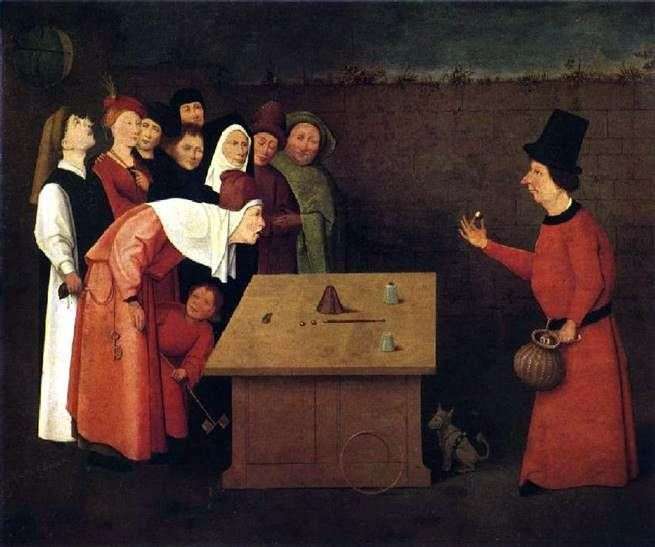
The conjurer is a picture of the Dutch artist Hieronymus Bosch. Regarding the time of writing, there is no common opinion and therefore the date is called the period from 1475 to 1502. Work belongs to the earliest in the artist’s work. It is located in the collection of the Municipal Museum in Saint-Germain-en-Laye.
The artist chose the ancient occupation of all sorts of scammers – a trick with thimbles. While all present were looking at the conjurer, his accomplice in the crowd was stealing a purse. Hieronymus Bosch painted an allegorical symbol on the table and in the mouth of the frog bending over the table. This amphibian included in the paintings, where it was necessary to convey any defect or ridicule church rituals. The magician’s clothes suggest an analogy with the red mantle of the papal cardinals, and the table with objects for the tricks is the church altar.
Each of the crowd at the table gave the artist individual features and busy with his own work. Bending over the table is a well-to-do citizen of the city, from whose mouth the frog looks, as a symbol of vice and sinfulness. A man who steals money from him is depicted in the clothes of a member of the Order of Dominicans. A man in black clothes openly flirts with a woman in a red headdress, putting one hand on her shoulder, and the other on her breast. The nun is closely watching the actions of the magician, and next to her a man in green clothes is looking at the spectators. As noted by the researchers of the work of Hieronymus Bosch – the man’s face in green clothes is found on other canvases. The color of the genre scene is based on comparing each other colors such as: white, red, black, and also minor shades of brown, blue and green.
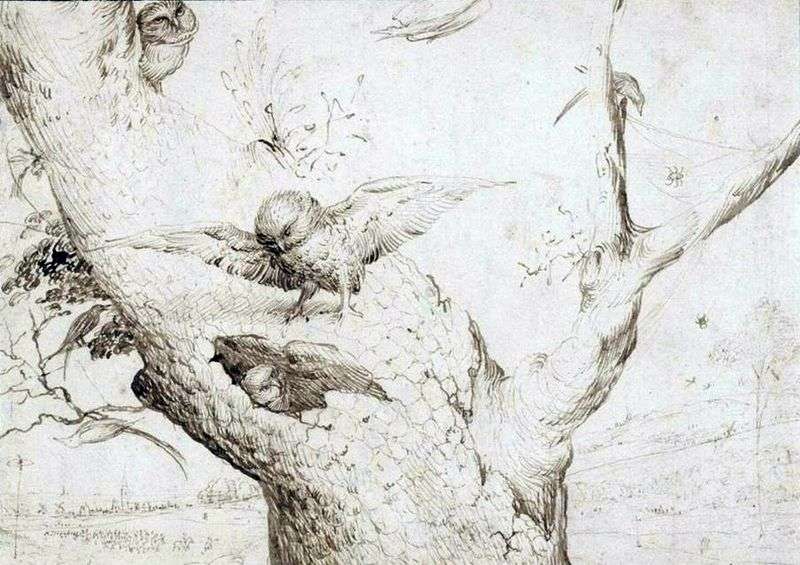 Nest of owls by Hieronymus Bosch
Nest of owls by Hieronymus Bosch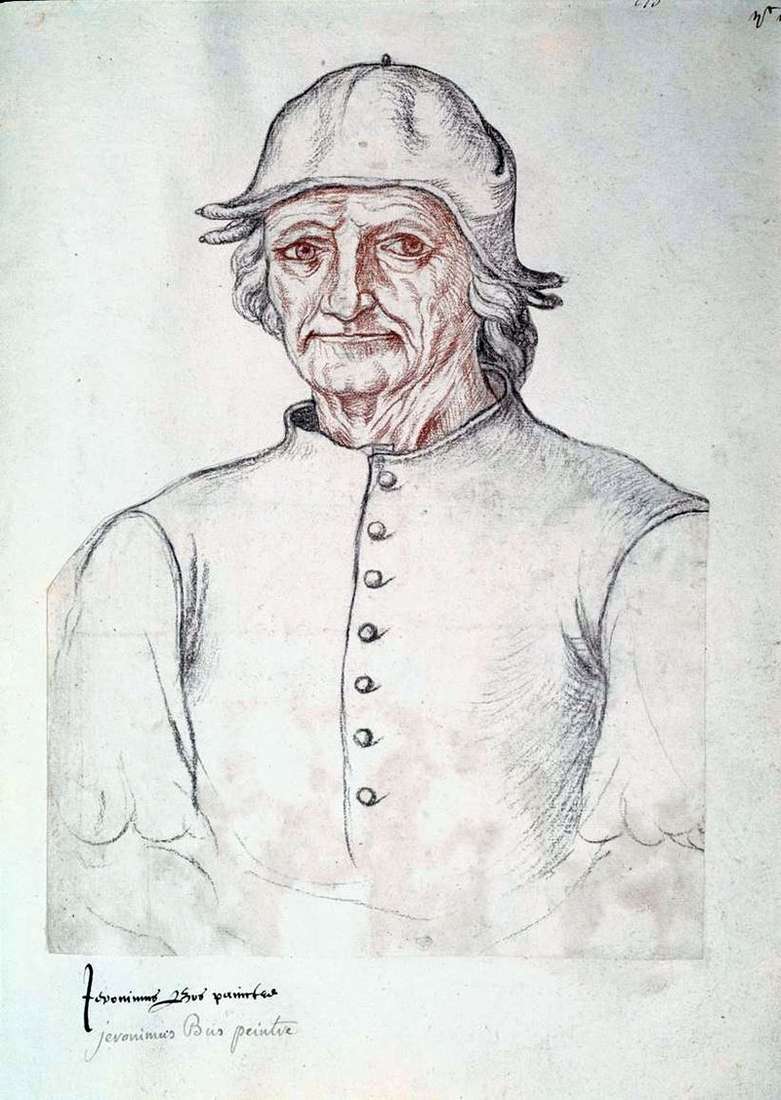 Self-portrait by Hieronymus Bosch
Self-portrait by Hieronymus Bosch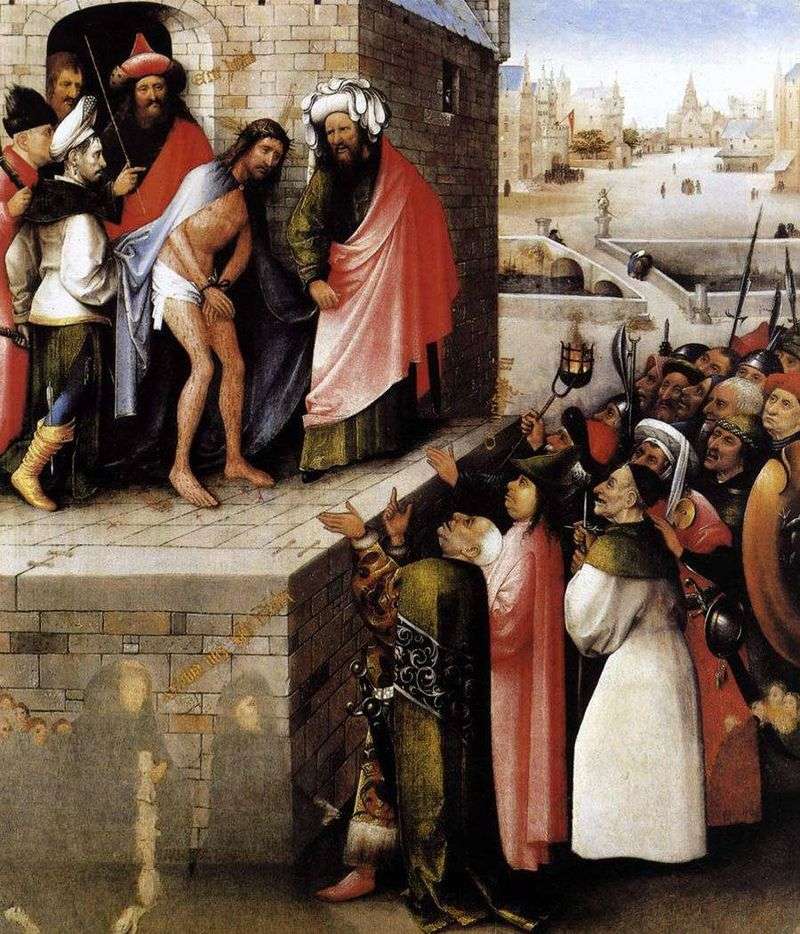 Ecce Homo by Hieronymus Bosch
Ecce Homo by Hieronymus Bosch Concert in the egg by Hieronymus Bosch
Concert in the egg by Hieronymus Bosch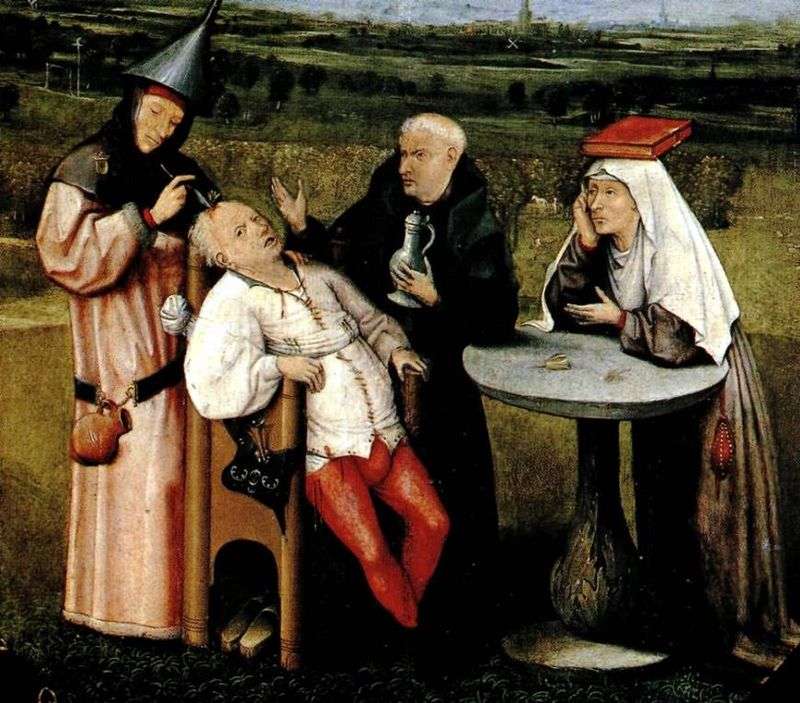 Extracting the stone of stupidity by Hieronymus Bosch
Extracting the stone of stupidity by Hieronymus Bosch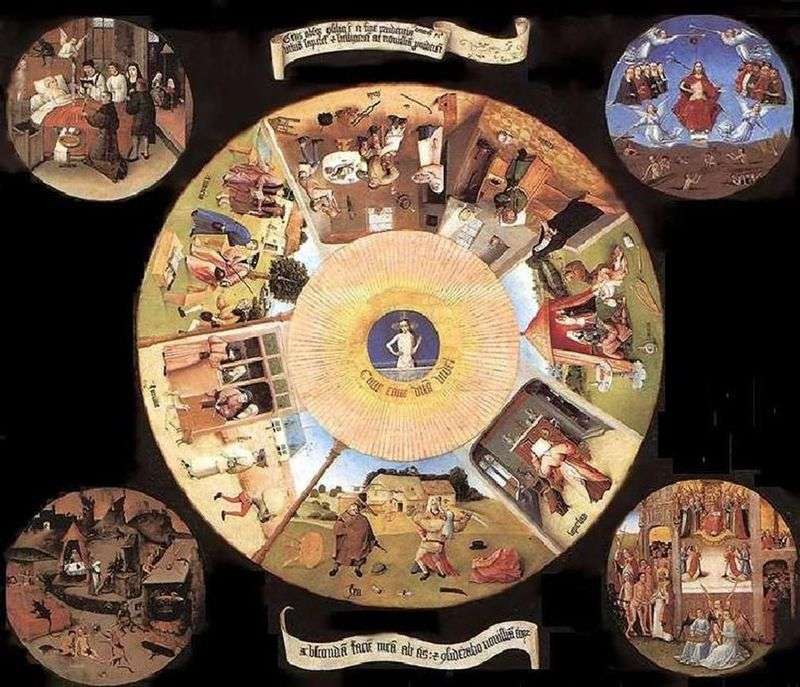 Seven deadly sins and the last four things by Hieronymus Bosch
Seven deadly sins and the last four things by Hieronymus Bosch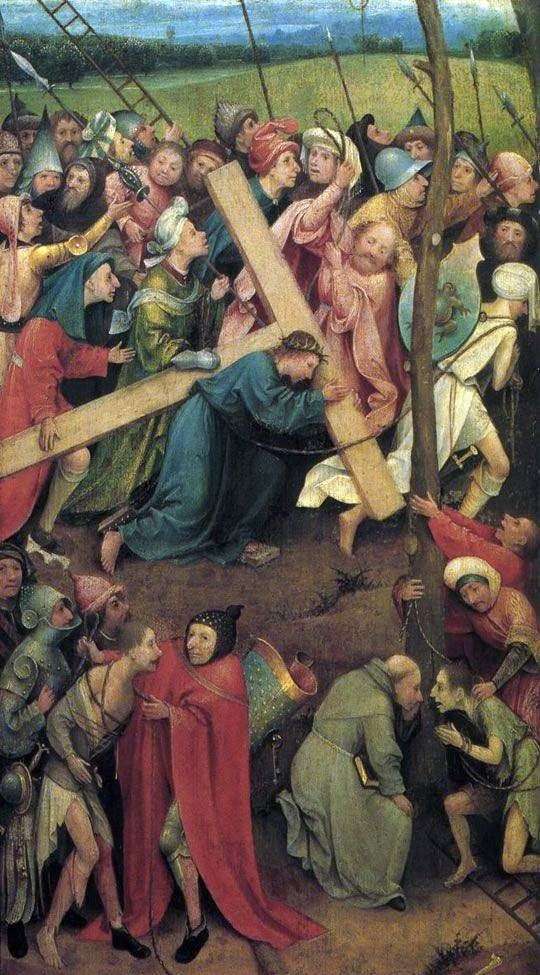 Carrying the Cross on Calvary by Hieronymus Bosch
Carrying the Cross on Calvary by Hieronymus Bosch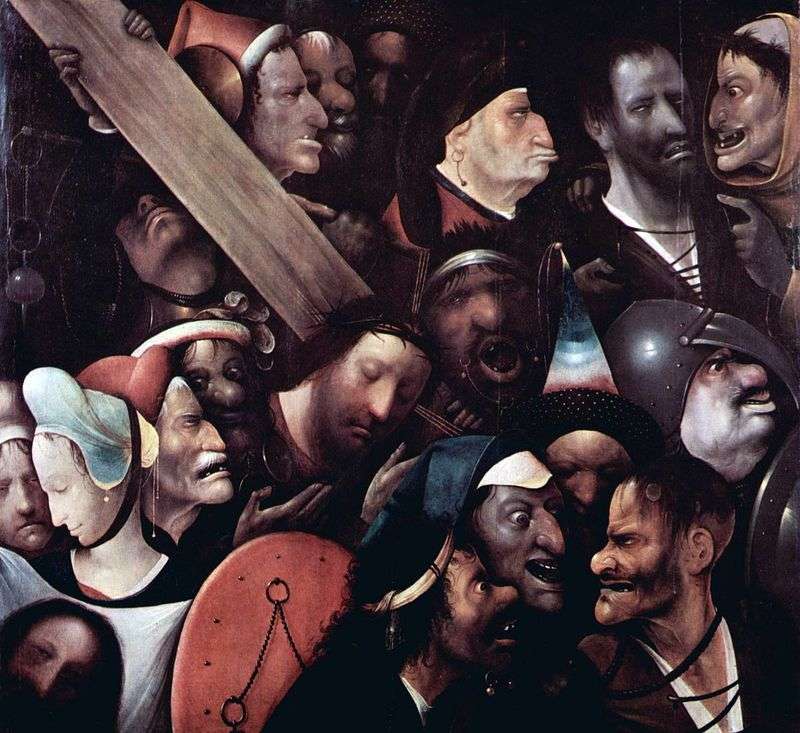 Carrying the cross by Hieronymus Bosch
Carrying the cross by Hieronymus Bosch